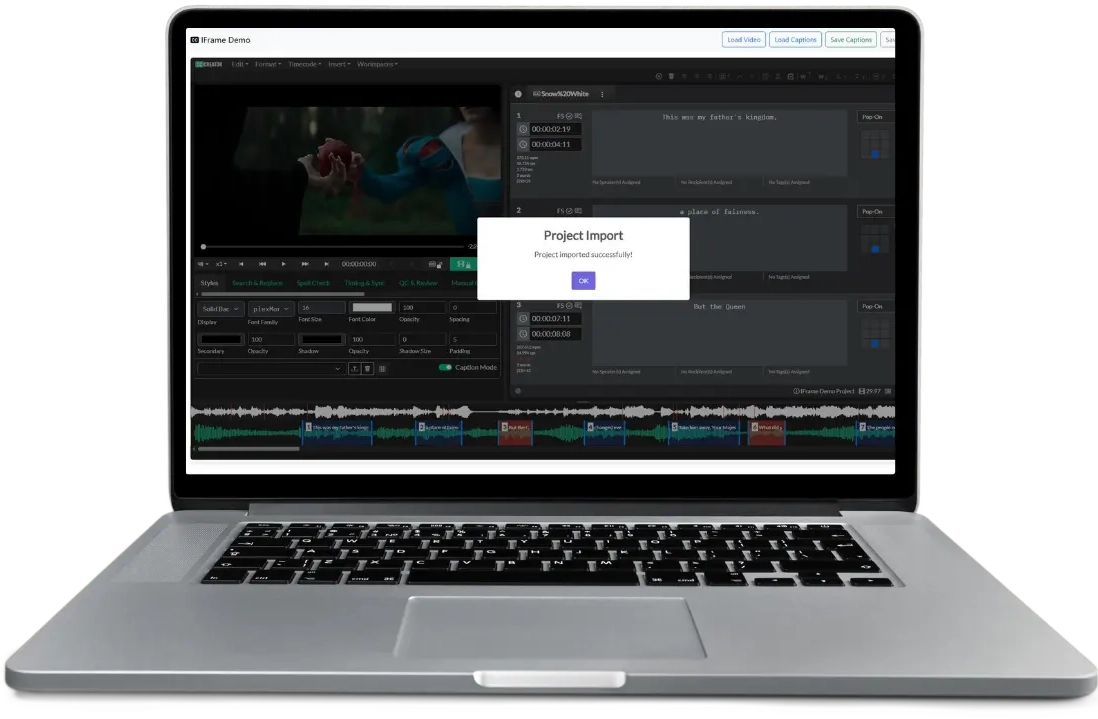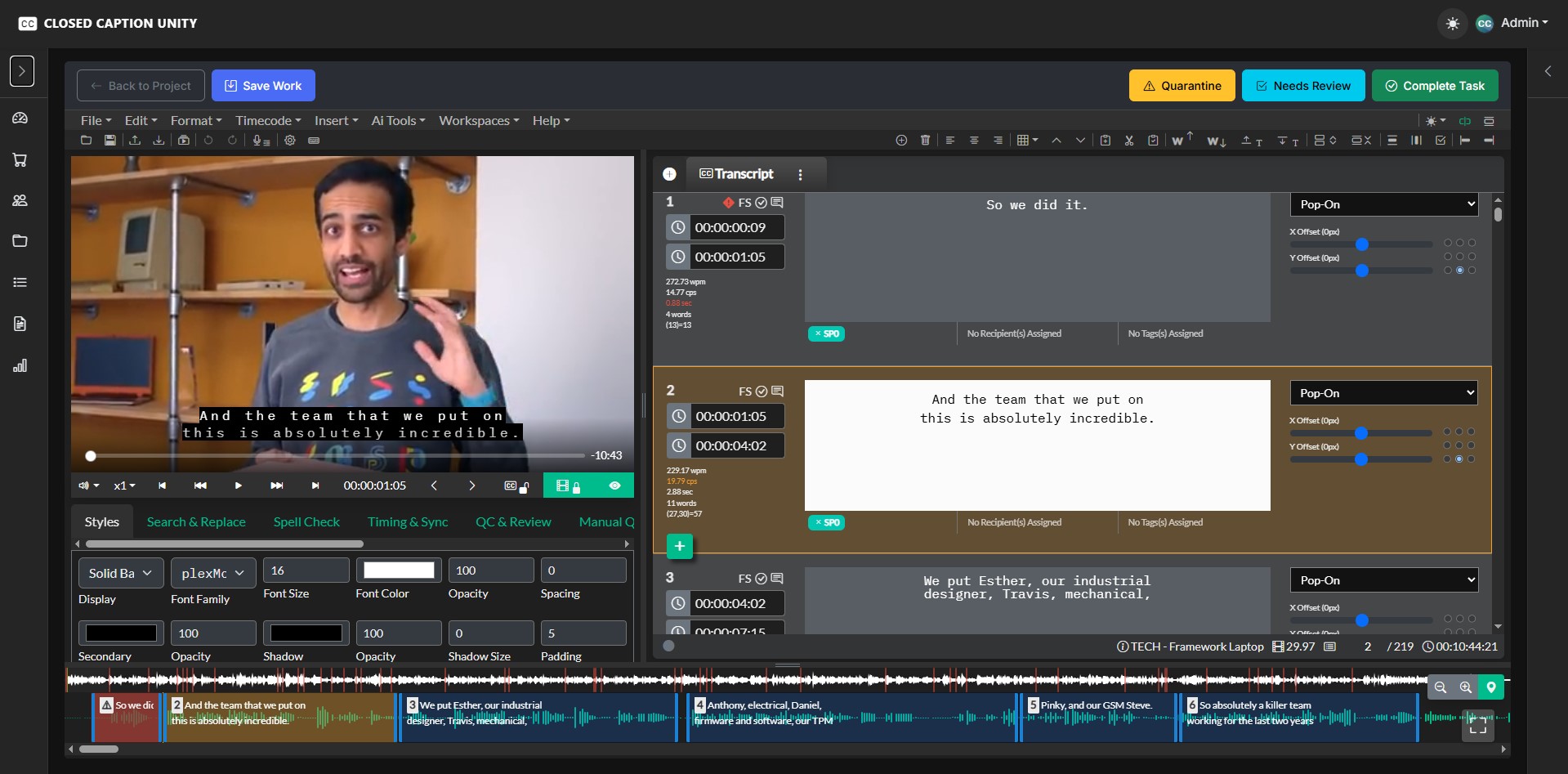Table of Contents
Information
Build vs. Buy: The Hidden Costs of Developing Your Own Subtitle Editor
By: Nathaniel Deshpande
Last Updated: June 18, 2025

Building it Yourself
In today's multimedia-driven world, providing robust captioning features within your web application isn't just a nice-to-have – it's a necessity. From accessibility compliance to expanding global reach, professional-grade subtitle editing is crucial. As a product manager or developer, you might find yourself at a crossroads: should we build our own browser-based subtitle editor, or should we integrate an existing, specialized solution?
While "building it yourself" might seem appealing for perceived control or customization, the reality of developing a truly professional, web-based subtitle editor quickly reveals a hidden iceberg of complexity, cost, and ongoing maintenance. Let's dive into some of the significant challenges you'll face.
The Hidden Complexities of "Building It Yourself"
A subtitle editor isn't just a text box linked to a video player. It's a precision instrument requiring deep technical expertise across multiple domains.
1. Achieving Frame Accuracy: A Developer's Headache
One of the most fundamental yet elusive challenges is achieving frame-accurate video playback and editing within an HTML player. Standard HTML5 video elements are not inherently designed for this level of precision. Synchronizing text edits to individual video frames, ensuring seamless scrubbing, and handling play/pause points with absolute accuracy is a monumental task. Developers often discover that the browser's native video controls lack the granular frame-level control needed for professional captioning, leading to significant custom development workarounds and ongoing performance battles.
2. Mastering Timecode Math: A Specialized Skill
Beyond basic playback, the core of subtitle editing revolves around timecode. This isn't just about seconds and milliseconds. You'll quickly encounter nuances like:
- Diverse Frame Rates: Videos come in a myriad of frame rates (e.g., 23.976, 24, 25, 29.97, 30, 50, 59.94, 60 FPS). Each requires precise calculation to ensure captions appear and disappear exactly when intended.
- Drop Frame Timecode: The notorious 29.97 drop frame timecode, common in NTSC video, introduces a non-linear counting system to maintain synchronization with real-time. Implementing this correctly requires specialized expertise to avoid cumulative errors that throw your captions completely out of sync.
- Timecode Conversions: Converting between different timecode formats (e.g., SMPTE, real-time) and handling frame-to-time conversions accurately is a complex mathematical endeavor that can easily become a source of bugs and frustration if not handled by experts.
3. Navigating the Labyrinth of Caption File Formats
Imagine building a translator for every language in the world. Now, imagine doing that for every single subtitle file format. The landscape of captioning formats is incredibly diverse, ranging from simple to extraordinarily complex:
- Simple Formats: Formats like SubRip (.srt) and WebVTT (.vtt) are relatively straightforward, human-readable text files. Building parsers for these is manageable.
- Complex and Binary Formats: The real challenge begins with professional and broadcast-specific formats. EBU-STL (.stl), for example, is a binary format commonly used in European broadcasting, requiring deep knowledge of byte structures and broadcast standards. Similarly, Scenarist (.scc) and MacCaption (.mcc) are proprietary formats that demand access to specialized technical specifications and a nuanced understanding of their intricacies, often necessitating reverse engineering or licensing.
- Ongoing Evolution: New formats emerge, and existing ones receive updates. Maintaining compatibility and staying current with industry standards is a continuous, resource-intensive task.
4. Ensuring Responsiveness and Performance
A browser-based editor needs to be fast, responsive, and performant across various devices and network conditions. This means:
- Optimized UI: Building a fluid user interface that handles rapid text input, real-time timecode adjustments, and seamless video interaction without lag.
- Efficient Data Handling: Managing potentially large caption files and complex project states in memory without bogging down the browser.
- Cross-Browser Compatibility: Ensuring the editor works flawlessly on Chrome, Firefox, Safari, Edge, and mobile browsers, each with its own quirks and limitations.
- Scalability: Designing the architecture to support a growing number of users and increasingly complex video projects.
5. The Unending Cycle of Support and Maintenance
Once your editor is built, the work is far from over. You'll be responsible for:
- Bug Fixes: Inevitable bugs will arise with new browser versions, operating system updates, and edge case scenarios.
- Feature Parity: Your competitors (and dedicated captioning tools) will continue to innovate. You'll need to invest continually in new features to keep your editor competitive.
- Security Updates: Ensuring the embedded editor remains secure and compliant with the latest web security standards.
- Technical Support: Providing ongoing support to your own development and product teams, who will inevitably have questions and issues related to the editor.
The True Cost of Development: Money and Time
When you tally up these challenges, the "build it yourself" option starts to look incredibly expensive:
- Development Hours: Hiring specialized engineers for video playback, timecode algorithms, and complex file parsing is costly. A conservative estimate for a feature-rich editor could run into hundreds to thousands of development hours.
- Expert Salaries: These are not entry-level positions. You're looking at significant salaries for highly skilled individuals.
- Lost Opportunity Cost: Every hour spent building a caption editor is an hour not spent on your core product. This delays your main roadmap and time-to-market for other critical features.
- Ongoing Maintenance Budget: Budgeting for continuous bug fixes, feature enhancements, and staying current with industry standards is an often-underestimated long-term cost.
- Risk of Failure: There's a real risk of building a sub-par solution that doesn't meet professional standards, leading to user dissatisfaction and wasted investment.
The "Buy" Alternative: Closed Caption Creator's IFrame Integration

This is where the "buy" strategy shines. Our Closed Caption Creator IFrame Integration offers a powerful alternative, allowing you to sidestep these formidable challenges entirely.
Instead of dedicating vast resources to developing and maintaining a complex subtitle editor, you can seamlessly embed our proven, professional-grade solution directly into your web application with just a few lines of code.
We handle the complexities of:
- Frame-accurate playback and editing.
- Intricate timecode math, including support for all common frame rates and drop-frame.
- Extensive caption file format support, from SRT to the most obscure broadcast formats like EBU-STL, Scenarist, and MCC.
- Optimized performance and responsiveness across devices.
- Continuous updates, maintenance, and expert technical support.
By integrating with Closed Caption Creator, you empower your users with a robust, intuitive, and feature-rich subtitle editor, saving valuable development time and resources while focusing on what your core product does best.
Ready to Integrate?
Don't let the complexities of subtitle editing slow down your product roadmap. Choose the smart path: leverage our expertise and integrate the Closed Caption Creator IFrame Remote.